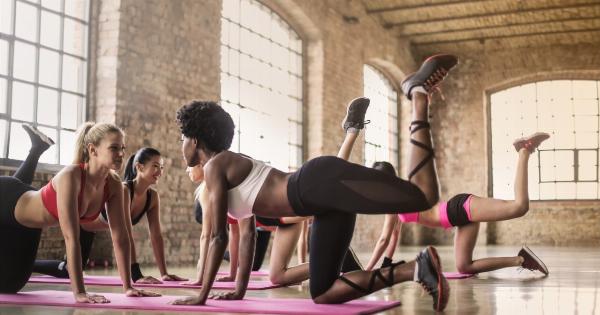Sports injuries can be painful, debilitating, and can seriously affect your ability to perform your best on the field. However, with proper precautions and preventive measures, you can significantly reduce the risk of sports injuries.
Whether you are a professional athlete, a weekend warrior, or just someone who enjoys playing sports recreationally, here are 10 effective ways to prevent sports injuries:.
1. Warm Up Before Every Session
A proper warm-up is crucial before engaging in any sports or physical activity. It helps to increase blood flow, raise body temperature, and prepare your muscles, joints, and tendons for the demands of the upcoming activity.
Include dynamic stretches and light cardio exercises in your warm-up routine to improve flexibility and reduce the risk of injury.
2. Wear Proper Sports Gear
Wearing the right gear is essential to protect yourself from any potential injuries. Make sure you have appropriate footwear that provides stability and support for your specific sport.
Use helmets, goggles, mouthguards, and any other protective equipment required for your sport. This gear can significantly reduce the impact of accidents and safeguard critical areas of your body.
3. Focus on Strength and Conditioning
Building strength and improving overall conditioning plays a significant role in preventing sports injuries. Incorporate strength training exercises that target the muscle groups used in your sport.
Additionally, develop a well-rounded conditioning routine that includes cardiovascular exercises, agility drills, and core strengthening exercises to enhance your overall fitness.
4. Practice Proper Technique
Using the correct technique while playing sports can help minimize the risk of injuries. Whether it’s throwing, jumping, tackling, or swinging, ensure that you learn and practice the proper form and technique from trained coaches or instructors.
Proper technique not only improves performance but also significantly reduces the likelihood of injury.
5. Stay Hydrated
Hydration is key to maintaining optimal performance and preventing injuries. Dehydration can lead to a decrease in concentration, coordination, and muscle cramps, making you more prone to injuries.
Drink plenty of water before, during, and after physical activity to stay hydrated. Avoid sugary drinks and alcohol, as they can have a negative effect on hydration levels.
6. Take Regular Rest Days
Rest days are just as important as training days. Overtraining and not allowing your body enough time to recover can lead to overuse injuries and burnout.
Plan regular rest days in your training schedule to give your body adequate time to repair and rebuild. Listen to your body and don’t push through pain or fatigue, as it can increase the risk of more severe injuries.
7. Implement Cross-Training
Engaging in a variety of activities can improve overall fitness and reduce the risk of overuse injuries.
Cross-training involves participating in different sports or activities to work different muscle groups while giving specific areas of your body a break. It can help prevent repetitive stress injuries and improve overall performance by enhancing your body’s ability to adapt to various types of stress.
8. Get a Sports Massage
Sports massages help in reducing muscle tension, promoting circulation, and preventing injuries. Consider incorporating regular sports massages into your routine, especially during periods of intense training.
A professional sports massage therapist can identify areas of tightness or weakness and provide targeted treatment to prevent potential injuries.
9. Pay Attention to Warning Signs
Ignoring warning signs from your body can lead to more severe injuries. If you experience pain, swelling, or notice any changes in your performance, seek professional advice and take appropriate action.
Early intervention by a healthcare professional can help prevent minor issues from escalating into significant injuries.
10. Gradually Increase Intensity and Volume
Whether you’re starting a new sport or increasing your training load, make sure to progress gradually. Sudden spikes in intensity, duration, or volume can overwhelm your body and increase the risk of injury.
Allow your body enough time to adapt and make incremental changes to your training plan to minimize the chances of overuse injuries.































